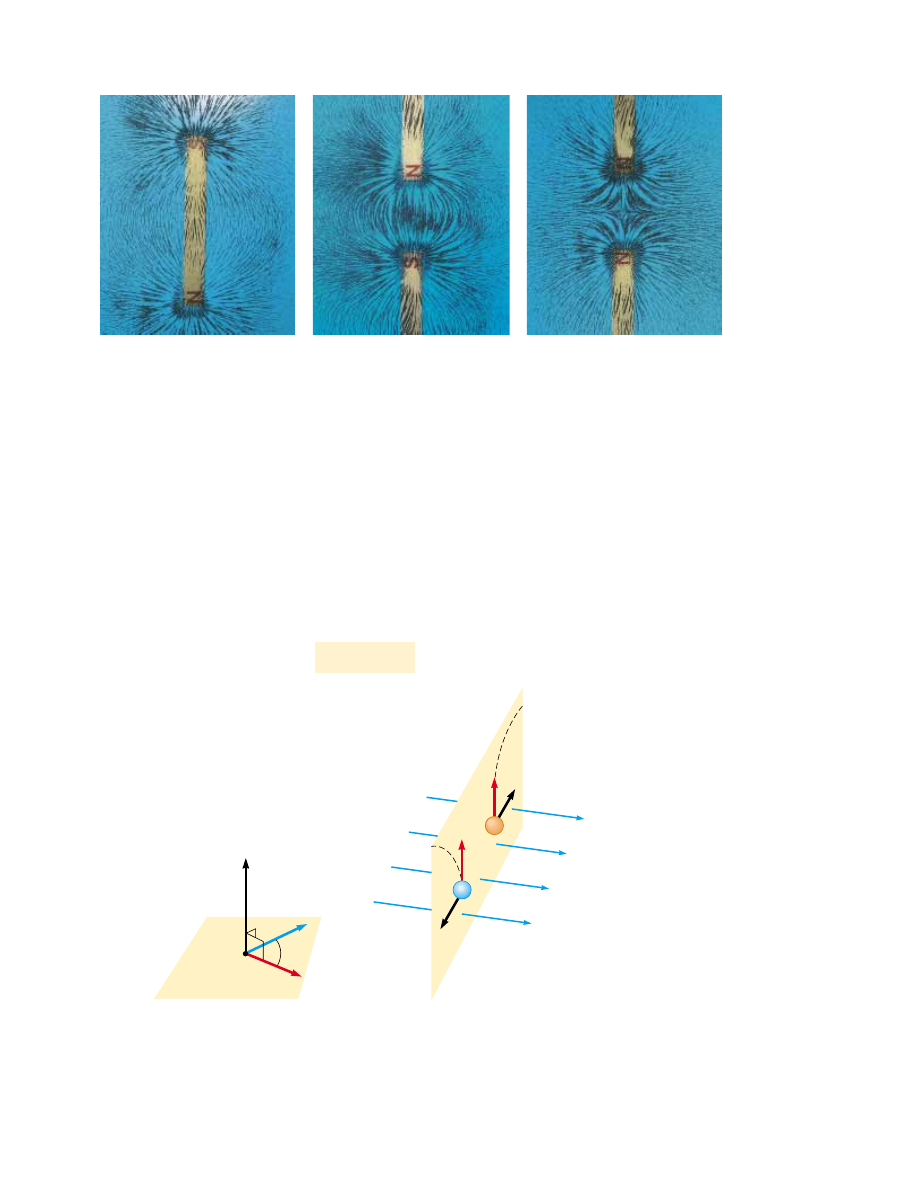Physics For Scientists And Engineers 6E - part 225

SECTION 29.1 • Magnetic Fields and Forces
897
• When the particle’s velocity vector makes any angle ! ! 0 with the magnetic field,
the magnetic force acts in a direction perpendicular to both
v and B; that is, F
B
is
perpendicular to the plane formed by
v and B (Fig. 29.3a).
• The magnetic force exerted on a positive charge is in the direction opposite the
direction of the magnetic force exerted on a negative charge moving in the same
direction (Fig. 29.3b).
• The magnitude of the magnetic force exerted on the moving particle is propor-
tional to sin !, where ! is the angle the particle’s velocity vector makes with the
direction of
B.
We can summarize these observations by writing the magnetic force in the form
(29.1)
F
B
"
q
v ! B
(a)
(b)
(c)
Figure 29.2 (a) Magnetic field pattern surrounding a bar magnet as displayed with
iron filings. (b) Magnetic field pattern between opposite poles (N–S) of two bar magnets.
(c) Magnetic field pattern between like poles (N–N) of two bar magnets.
(a)
F
B
B
+ q
v
θ
(b)
F
B
B
–
v
v
F
B
+
Figure 29.3 The direction of the magnetic force F
B
acting on a charged particle
moving with a velocity v in the presence of a magnetic field B. (a) The magnetic force is
perpendicular to both v and B. (b) Oppositely directed magnetic forces F
B
are exerted
on two oppositely charged particles moving at the same velocity in a magnetic field. The
dashed lines show the paths of the particles, which we will investigate in Section 29.4.
Henry Leap and Jim Lehman
Vector expression for the
magnetic force on a charged
particle moving in a magnetic
field